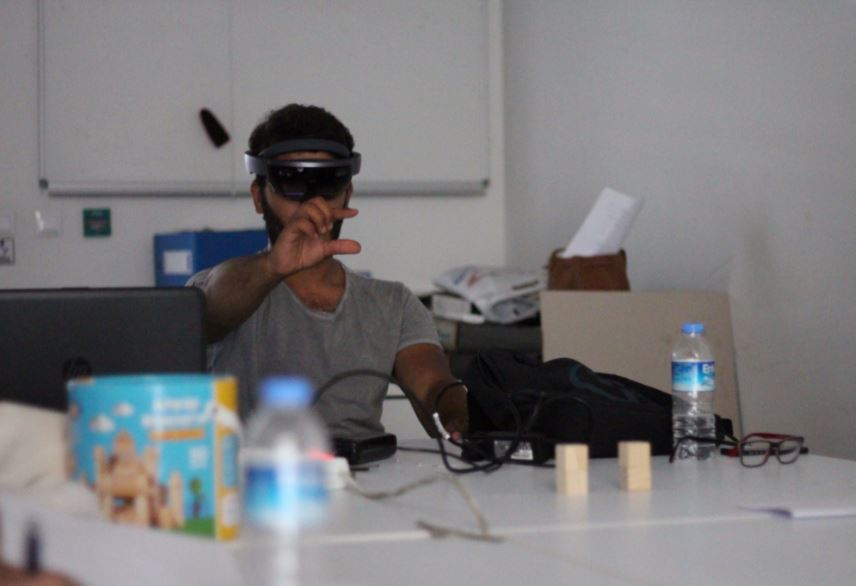Mixed Reality Experience at TOBB ETÜ
8 YEAR(S) AGO
First virtual reality, then augmented reality and finally mixed reality applications have become a part of our lives as a result of the advancements in technology and falling costs. The mixed reality technology, which is, on the contrary to the popular belief, fairly different from the virtual reality experience, is also known as hybrid system. Hybrid, that is mixed. In fact, the name of this technology is also clearly explaining the working principle of the technology. When we engage the mixed reality glasses, we try to reconcile the real life objects and the virtual objects created by the computer at the same moment and in the same environment. That may be a bridge with real piers but a virtual frame or a cadaver, the blocks of which may have been derived from the Internet and assembled together.
This technology, the proliferation of the use of which is currently in progress in Turkey, is now the subject matter of a research project, which is carried out by Hande Yazıcı, a student of the graduate program of the Design Department, under the lead of Assistant Prof. Dr. Ahmet Fatih Karakaya, the Head of the Department of Art and Design and a faculty member of the Department of Interior Architecture and Environmental Design. The team is also supported by Associate Prof. Dr. Feyza Mzgündoğdu, a faculty member of the Department of Ceramics at Hacettepe University. We asked the team about how they launched and implemented the project. We were responded that the team has been continuing the research, development and application efforts as necessary to render this emerging technology usable for the purposes of art and design education.
Having comprehended the methods of use of the technology, the team studies how it can be carried one step forward. They are working to improve the software and provide the necessary updates by giving feedback to Microsoft about the needs they have identified by way of the relevant trial and test applications. The research aims to improve Basic Art and Basic Design education to be more productive and creatively supportive with the help of a ready-made block application within Microsoft HoloLens, called HoloBlocks.
Emphasizing that creativity plays a critical role in every field of education, researchers aim to make this technology available as a facilitator in education by proving that technology and creativity are two intertwined phenomena.
News Story Credit: İpek Aksel - Department of Interior Architecture and Environmental Design
